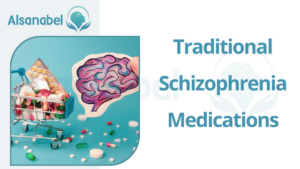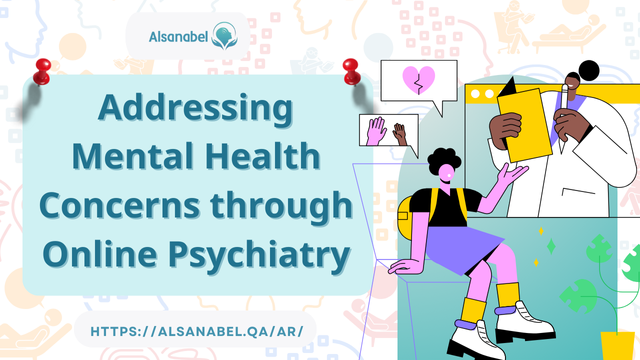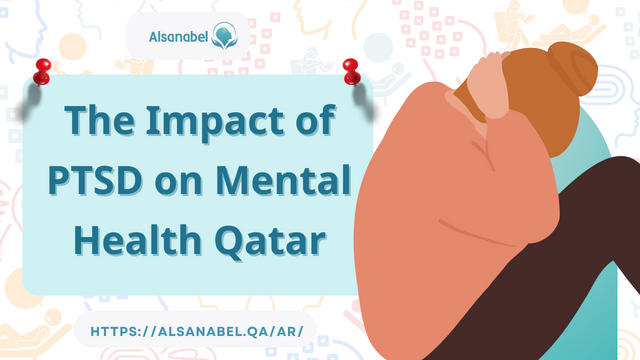Traditional and Modern Schizophrenia Medications 2023
- Category ADHD
Schizophrenia is a complex and chronic mental disorder that affects millions of people worldwide. It is characterized by symptoms such as hallucinations, delusions, disorganized thinking, and impaired social functioning. While therapy and other supportive interventions play a crucial role in managing schizophrenia, Schizophrenia Medications is often an essential component of treatment.
Table of Contents
Toggletraditional and modern schizophrenia medications
Traditionally, antipsychotic medications have been the mainstay of treatment for schizophrenia. These medications, such as haloperidol and chlorpromazine, work by blocking certain neurotransmitters in the brain, reducing the severity of psychotic symptoms. While effective in controlling hallucinations and delusions, traditional antipsychotics can cause significant side effects, including extrapyramidal symptoms (movement disorders) and metabolic effects.
In recent years, newer or “atypical” antipsychotic medications have been developed. These include drugs like clozapine, risperidone, and olanzapine. Atypical antipsychotics offer several advantages over traditional medications, including a lower risk of movement disorders and a reduced likelihood of causing tardive dyskinesia. They are also thought to have better efficacy in treating negative symptoms associated with schizophrenia, such as diminished emotional expression and social withdrawal.
Traditional Schizophrenia Medications

Overview of first-generation antipsychotics
First-generation antipsychotic medications, also known as traditional or typical antipsychotics, have been widely used in the treatment of schizophrenia for many years. Examples of first-generation antipsychotics include haloperidol and chlorpromazine. These medications work by blocking certain neurotransmitters in the brain, reducing the severity of psychotic symptoms such as hallucinations and delusions.
Advantages and disadvantages of traditional schizophrenia medications
While first-generation antipsychotics can effectively manage psychotic symptoms, they also come with significant side effects. Common side effects include extrapyramidal symptoms, such as tremors and involuntary muscle movements, and metabolic effects, such as weight gain and increased risk of diabetes. These side effects can impact an individual’s overall well-being and quality of life.
Compared to newer atypical antipsychotics, first-generation medications have a higher risk of causing movement disorders and a higher likelihood of leading to tardive dyskinesia. Tardive dyskinesia is a condition characterized by involuntary, repetitive movements, such as lip smacking or tongue protrusion.
Despite their side effects, first-generation antipsychotics are still prescribed in certain situations, such as when individuals do not respond well to atypical antipsychotics or when cost is a significant factor. In some cases, a combination of first-generation and atypical antipsychotics may be used to achieve symptom control while minimizing side effects.
It is important for individuals with schizophrenia to have regular check-ins with their healthcare provider to monitor the effectiveness of their medication and adjust the dosage if needed. The ultimate goal is to find the most suitable medication and dosage that can effectively manage symptoms and improve overall functioning.
Modern Schizophrenia Medications
Overview of second-generation antipsychotics
Second-generation antipsychotics, also known as atypical antipsychotics, are a newer class of medications used in the treatment of schizophrenia. Examples include risperidone, olanzapine, and quetiapine. These medications work by balancing neurotransmitters in the brain, particularly dopamine and serotonin, which helps manage psychotic symptoms.
Comparison of second-generation antipsychotics with first-generation antipsychotics
When comparing second-generation antipsychotics with first-generation antipsychotics, there are some notable differences:
- First-generation Antipsychotics: Mostly effective in managing positive symptoms, but less effective for negative symptoms, Higher risk of extrapyramidal symptoms, Lower risk of metabolic effects, Higher risk of developing tardive dyskinesia, Generally less expensive.
- Second-generation Antipsychotics: Generally effective in managing both positive and negative symptoms of schizophrenia, Lower risk of extrapyramidal symptoms, such as tremors and muscle rigidity, Higher risk of weight gain, increased cholesterol levels, and risk of diabetes, Lower risk of developing tardive dyskinesia, Generally more expensive than first-generation antipsychotics.
Overall, second-generation antipsychotics have become the preferred choice in the treatment of schizophrenia due to their effectiveness in managing a broader range of symptoms and their lower risk of extrapyramidal symptoms. However, they do have an increased risk of metabolic side effects, which necessitates regular monitoring and management.
Side Effects and Safety
Managing side effects of Traditional schizophrenia medications
Traditional or first-generation antipsychotics, such as haloperidol and chlorpromazine, are associated with several common side effects. These include:
- Extrapyramidal symptoms: These are motor disturbances that may include tremors, muscle stiffness, and involuntary movements. They are more commonly seen with first-generation antipsychotics compared to second-generation antipsychotics.
- Sedation: Traditional antipsychotics can cause drowsiness and sedation, which can affect a person’s alertness and cognitive function.
- Dry mouth: Many individuals experience a decrease in saliva production, leading to dryness in the mouth.
- Blurred vision: Some people may have difficulties with visual acuity or experience blurred vision.
- Constipation: Traditional antipsychotics can cause a slowing down of bowel movements, leading to constipation.
Managing side effects of modern schizophrenia medications
While second-generation antipsychotics generally have a lower risk of extrapyramidal symptoms compared to first-generation antipsychotics, they still come with their own set of side effects. Here are some strategies to manage these side effects:
- Weight gain: Regular exercise and a balanced diet can help minimize weight gain. Monitoring weight regularly and making appropriate adjustments to the treatment plan can be beneficial.
- Metabolic effects: Regular monitoring of cholesterol and blood sugar levels is important to detect any potential abnormalities early. Lifestyle modifications, such as adopting a healthy diet and engaging in physical activity, may also be recommended.
- Sedation: Adjusting the timing of medication administration or splitting the dose can help manage sedation. It’s important to discuss any sedation-related concerns with a healthcare provider.
- Sexual side effects: Some individuals may experience reduced sexual desire or other sexual dysfunction. Open communication with a healthcare provider can help address these concerns and explore potential solutions.
It’s important for individuals with schizophrenia to discuss any side effects or safety concerns with their healthcare provider. Each person’s experience with medication can vary, and a personalized approach to treatment can help optimize benefits while managing side effects effectively. Regular follow-up appointments and open communication with healthcare professionals are key for ongoing safety and well-being.
Efficacy and Treatment Response

Effectiveness of traditional schizophrenia medications
Traditional schizophrenia medications, such as haloperidol and chlorpromazine, have been used for decades to treat symptoms of schizophrenia. These medications have been shown to be effective in reducing psychotic symptoms, such as hallucinations and delusions, in many individuals with the condition. They work by blocking dopamine receptors in the brain, which helps to regulate the neurotransmitter imbalance believed to contribute to schizophrenia.
However, it’s important to note that traditional antipsychotics may not be effective for everyone. Response to these medications can vary, and some individuals may not experience significant improvement in symptoms or may have difficulty tolerating the side effects. In such cases, alternative treatment options may need to be explored.
Response rates to modern schizophrenia medications
Second-generation antipsychotics, also known as atypical antipsychotics, have emerged as a newer class of medications for schizophrenia treatment. These medications, including aripiprazole, risperidone, and olanzapine, work by targeting both dopamine and serotonin receptors in the brain.
Overall, response rates to modern schizophrenia medications tend to be higher compared to traditional antipsychotics. Research studies have shown that these medications can effectively alleviate psychotic symptoms in a significant number of individuals with schizophrenia. Additionally, second-generation antipsychotics may also help to improve negative symptoms, such as social withdrawal and lack of motivation, which are often more challenging to treat.
Although modern antipsychotics have demonstrated improved response rates, it’s important to recognize that individual responses may still vary. Finding the right medication and dosage may require some trial and error, as each person’s brain chemistry and symptoms can differ. Regular follow-up appointments and open communication with healthcare professionals are crucial in monitoring treatment response and making any necessary adjustments.
Combination Therapy
Combining traditional and modern schizophrenia medications can offer several benefits for individuals with the condition. By utilizing both classes of medications, healthcare providers can target different aspects of the disorder and improve overall treatment outcomes. Some benefits of combination therapy include:
- Enhanced symptom control: Traditional antipsychotics primarily target dopamine receptors, while second-generation antipsychotics work on both dopamine and serotonin receptors. By combining these medications, healthcare providers can effectively address a broader range of symptoms, including both positive and negative symptoms of schizophrenia.
- Reduced side effects: Traditional antipsychotics can sometimes cause side effects such as movement disorders. By adding in a modern antipsychotic, healthcare providers may be able to minimize these side effects while still achieving symptom relief.
- Increased treatment response: Some individuals may not respond adequately to traditional antipsychotics alone. By adding a modern antipsychotic to their treatment regimen, healthcare providers may improve response rates and help individuals achieve better symptom control.
Examples of combination therapy approaches
Several combination therapy approaches can be used in the treatment of schizophrenia. The specific combination and dosage will depend on individual circumstances and the healthcare provider’s judgment. Some examples include:
- Traditional antipsychotic plus second-generation antipsychotic: This approach involves combining a traditional antipsychotic, such as haloperidol or chlorpromazine, with a second-generation antipsychotic, such as aripiprazole or risperidone. This combination can provide comprehensive symptom control while minimizing side effects.
- Traditional antipsychotic plus antidepressant: Sometimes, individuals with schizophrenia may also experience symptoms of depression. In such cases, healthcare providers may combine a traditional antipsychotic with an antidepressant to address both the psychotic and depressive symptoms.
- Traditional antipsychotic plus mood stabilizer: For individuals who also experience mood swings or manic episodes in addition to psychotic symptoms, combining a traditional antipsychotic with a mood stabilizer, such as lithium or valproate, may be beneficial.
Medication Adherence
Importance of medication adherence in schizophrenia treatment
Medication adherence, or the consistent and proper use of prescribed medications, is crucial in the treatment of schizophrenia. It is essential for individuals with schizophrenia to adhere to their medication regimen as prescribed by their healthcare provider. Here are some reasons why medication adherence is important:
- Symptom management: Consistent medication adherence helps individuals with schizophrenia manage their symptoms effectively. Psychiatric medications work by balancing certain chemicals in the brain, reducing the severity and frequency of psychotic symptoms. Regular use of medications can help prevent relapses and maintain stability in day-to-day functioning.
- Prevention of hospitalization: Non-adherence to medication can increase the risk of relapse and hospitalization for individuals with schizophrenia. Continuously taking prescribed medications as directed can help prevent acute exacerbations of symptoms, reducing the likelihood of psychiatric hospitalizations.
- Improved quality of life: Medication adherence can significantly improve the overall quality of life for individuals with schizophrenia. By managing symptoms effectively, individuals may experience improved cognitive function, increased social interactions, and better overall functioning, contributing to a better quality of life.
Strategies to improve medication adherence
Improving medication adherence in individuals with schizophrenia can be challenging, but the following strategies can help promote adherence:
- Patient education: Healthcare providers should take the time to educate individuals about the importance of medication adherence and the potential benefits it can provide. Providing information about the mechanism of action, potential side effects, and long-term outcomes can help individuals understand the significance of taking their medications as prescribed.
- Regular follow-up appointments: Regular check-ins and appointments with healthcare providers can reinforce the importance of medication adherence. These appointments offer an opportunity to address any concerns or challenges individuals may face and make any necessary adjustments to the medication regimen.
- Simplifying medication regimens: Simplifying medication regimens by reducing the number of pills or doses required can improve adherence. Healthcare providers may consider prescribing long-acting injectable antipsychotics, which only require administration every few weeks, reducing the burden of daily medication management.
- Involvement of support systems: Involving family members or trusted individuals in the treatment process can provide additional support for medication adherence. They can help monitor medication intake, remind individuals about doses, and provide emotional support.
Alternative Treatment Options
Overview of non-pharmacological approaches for schizophrenia treatment
Non-pharmacological approaches, in addition to medication, can be beneficial in managing schizophrenia. These alternative treatment options focus on addressing various aspects of the disorder, including symptoms, cognitive functioning, and overall well-being. Here are some non-pharmacological approaches commonly used in conjunction with medication:
- Psychosocial interventions: These interventions aim to improve interpersonal and social skills, promote independence, and enhance overall functioning. Examples include individual therapy, group therapy, and family therapy. Psychosocial interventions can help individuals with schizophrenia develop coping strategies, manage stress, and improve their understanding of the disorder.
- Cognitive remediation: Cognitive remediation programs focus on improving cognitive deficits commonly associated with schizophrenia, such as attention, memory, and problem-solving abilities. These programs often involve computer-based exercises and cognitive training techniques. Cognitive remediation can help individuals with schizophrenia enhance their cognitive functioning and improve their ability to perform daily tasks.
- Supported employment and education: These programs provide support and assistance in finding and maintaining employment or pursuing educational opportunities. Supported employment and education programs aim to promote independence and improve overall functioning for individuals with schizophrenia. They offer practical skills training, career guidance, and job placement support.
Complementary therapies and lifestyle changes
Complementary therapies and lifestyle changes can also play a role in managing schizophrenia. While these approaches may not replace medication, they can provide additional support and promote overall well-being. Here are some complementary therapies and lifestyle changes that may be beneficial:
- Exercise: Regular physical exercise has been shown to have a positive impact on mental health. Engaging in physical activity, such as walking, jogging, or yoga, can help reduce stress, improve mood, and enhance overall wellness for individuals with schizophrenia.
- Dietary changes: Adopting a balanced and nutritious diet can support overall health and well-being. A diet rich in fruits, vegetables, whole grains, and lean proteins can provide important nutrients and contribute to better physical and mental health.
- Stress management techniques: Learning and practicing stress management techniques, such as deep breathing exercises, mindfulness meditation, or engaging in hobbies, can help individuals with schizophrenia cope with daily stressors and improve overall well-being.
- Support groups: Joining support groups, either in-person or online, can provide individuals with schizophrenia an opportunity to connect with others who understand their experiences. Support groups offer a platform for sharing concerns, gaining insights, and receiving emotional support.
While alternative treatment options can be beneficial for individuals with schizophrenia, it is essential to consult with a healthcare provider to determine the most appropriate and effective combination of treatments. Working closely with a healthcare team can help ensure holistic and personalized care for individuals living with schizophrenia.
Choosing between traditional and modern schizophrenia medications
When it comes to treating schizophrenia, the choice between traditional and modern medications can be a challenging decision. Traditional antipsychotic medications, such as haloperidol and chlorpromazine, have been used for decades and have proven effectiveness in reducing psychotic symptoms.
However, they also come with a higher risk of side effects, including movement disorders. On the other hand, modern atypical antipsychotic medications, such as risperidone and olanzapine, offer a lower risk of movement disorders but may have an increased risk of weight gain and metabolic problems.
The choice between traditional and modern medications should be based on an individual’s specific needs and preferences, as well as a careful consideration of the potential risks and benefits. Consulting with a healthcare provider or psychiatrist can help determine the most suitable medication option and dosage for each individual.
Future directions in schizophrenia treatment
The field of schizophrenia treatment is constantly evolving, with ongoing research and advancements leading to new possibilities and innovations. Some promising areas of future development in schizophrenia treatment include:
- Targeted therapies: Researchers are exploring the use of targeted therapies that focus on specific biological pathways and mechanisms involved in schizophrenia. These therapies aim to address the underlying causes of the disorder and improve treatment outcomes.
- Personalized medicine: Personalized medicine aims to tailor treatment approaches to an individual’s specific genetic, biological, and environmental factors. By considering the unique characteristics of each person, personalized medicine can optimize treatment effectiveness and minimize side effects.
- Non-invasive brain stimulation: Techniques such as transcranial magnetic stimulation (TMS) and transcranial direct current stimulation (tDCS) are being investigated as potential adjunctive treatments for schizophrenia. These non-invasive brain stimulation methods target specific brain regions to modulate neural activity and alleviate symptoms.
- Holistic and integrative approaches: Integrating different treatment modalities, such as medication, psychotherapy, lifestyle changes, and complementary therapies, can provide a comprehensive and personalized approach to managing schizophrenia. This holistic approach recognizes the multifaceted nature of the disorder and aims to address various dimensions of a person’s well-being.









